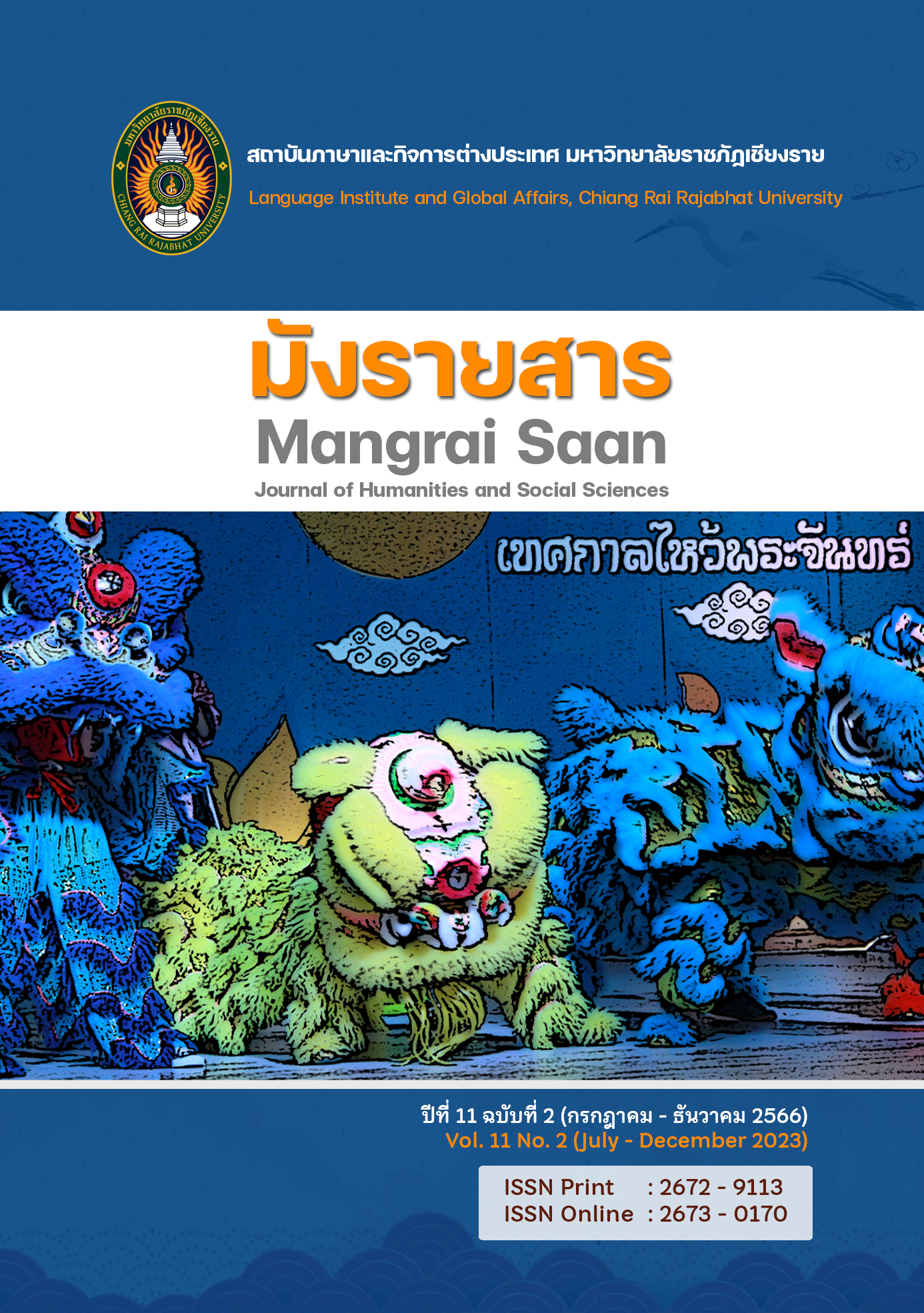Factors encouraging Thai tourists to stay at hotels in Chiang Rai Province during the COVID-19 situation
Main Article Content
Abstract
Based on data collection of Thai tourists staying at hotels in Chiang Rai during the sixth phase of disease transition periods, it was found that factors influencing hotel occupancy the most was a variety of payment channels such as cash, credit card, online payment, etc. For hygiene, it was found that clean room was at the highest average. For environment, it was found that good ventilation was at the highest average. For safety, it was found that supplying hand sanitizer, masks, and disinfection cabinets was at the highest average. For facilities, it was found that hotel facilities such as fitness centers, spas, entertainment venues, and others in compliance with safety measures for organizations (COVID Free Setting) was at the highest average. For service, it was found that service-mined staff was at the highest average. Overall, factors that drive tourist to stay hotel stays during the COVID-19 pandemic crisis include service, price, hygiene, environmental, safety, and facilities respectively.
Article Details

This work is licensed under a Creative Commons Attribution-NonCommercial-NoDerivatives 4.0 International License.
The authors should ensure all the contents and information of the articles published in Mangraisaan. The editors do not share any related responsibility.
References
กระทรวงการท่องเที่ยวและกีฬา. (2564). สถานการณ์การท่องเที่ยวในประเทศ รายจังหวัดปี 2563 (Domestic Tourism Statistic (classify by region and province 2020)). ค้นเมื่อ 8 พฤษภาคม 2566 จาก https://www.mots.go.th/news/category/594
กระทรวงสาธารณสุข. (2565). แผนและมาตรการการบริหารจัดการสถานการณ์โรคโควิด 19 สู่โรคปะจำถิ่น. ค้นเมื่อ 8 พฤษภาคม 2566 จาก www.spko.moph.go.th/wp-content/uploads/2022/05/แผนและมาตรการ-การบริหารจัดการสถานการณ์โรค-.pdf
กัลยา วานิชย์บัญชา. (2548). การวิเคราะห์สถิติขั้นสูงด้วย SPSS for Windows. กรุงเทพฯ: ภาควิชาสถิตคณะพาณิชยศาสตร์และการบัญชีจุฬาลงกรณ์มหาวิทยาลัย.
ชนพัฒน์ ช่วยครุฑ, อมรฤทัย ภูสรม และอรอนงค์ เดชมณี. (2563). ปัจจัยที่ส่งผลกระทบต่อพฤติกรรมการท่องเที่ยวของเยาวชนไทยหลังยุคโควิด-19. วารสารวิชาการและวิจัยมหาวิทยาลัยภาคตะวันออกเฉียงเหนือ, 10(3), 187-201.
บุญเลิศ จิตตั้งวัฒนา. (2548). การพัฒนาและการอนุรักษ์แหล่งท่องเที่ยว. กรุงเทพฯ.
พชรพจน์ นันทรามาศ, กิตติพงษ์ เรือนทิพย์ และจารุวรรณ เหล่าสัมฤทธิ์. (2563). เจาะพฤติกรรมท่องเที่ยวใน New Normal: เมื่อโควิดทำชีวิตเปลี่ยน. Krungthai Compass, p7.
ศิริวรรณ เสรีรัตน์. (2546). การบริหารการตลาด. กรุงเทพมหานคร : พัฒนาศึกษา.
ศิริวรรณ เสรีรัตน์. (2550). พฤติกรรมผู้บริโภค. กรุงเทพฯ: สำนักพิมพ์ บริษัท ธีระฟิล์ม และไซเท็ก จำกัด.
สำนักงานการต่างประเทศ กรุงเทพมหานคร. (2564). ยุทธศาสตร์การฟื้นฟูภาคการท่องเที่ยวในช่วงการแพร่ระบาดของโรคโควิด-19. ค้นเมื่อ 8 พฤษภาคม 2566 จาก https://iao.bangkok.go.th/content-detail/22438
Enrich Hotel Products. (2020). การจัดแบ่งประเภทของที่พักแรมหรือโรงแรม. สืบค้นเมื่อ 3 กันยายน 2566 จาก https://www.enrhotelproducts.co.th/content_topic.php?id=40
HRNOTE. (2565). ทำความรู้จัก crisis Management ในวันที่โลกนี้ไม่มีความแน่นอน”. ค้นเมื่อ 8 พฤษภาคม 2566 จาก https://th.hrnote.asia/personnel-management/220506-crisis-management
Krungthai COMPASS. (2563). Research Note: Krungthai COMPASS ประเมิน “เราเที่ยวด้วยกันกระตุ้นท่องเที่ยวไทยได้ 3.6-6.2 หมื่นล้านบาท. Jul 20, 2020.
TAT Review. (2022). พฤติกรรมนักท่องเที่ยวไทยในสถานการณ์ COVID-19. งานวิจัย กองวิจัยการตลาดการท่องเที่ยว ททท. ค้นเมื่อ 9 กันยายน 2566 จาก https://tatreviewmagazine.com/article/thai-travel-behavior-in-covidmosphere
Yamane, T. (1973). Statistics: An Introductory Analysis. 3rd. New York: Harper and Row Publication.

